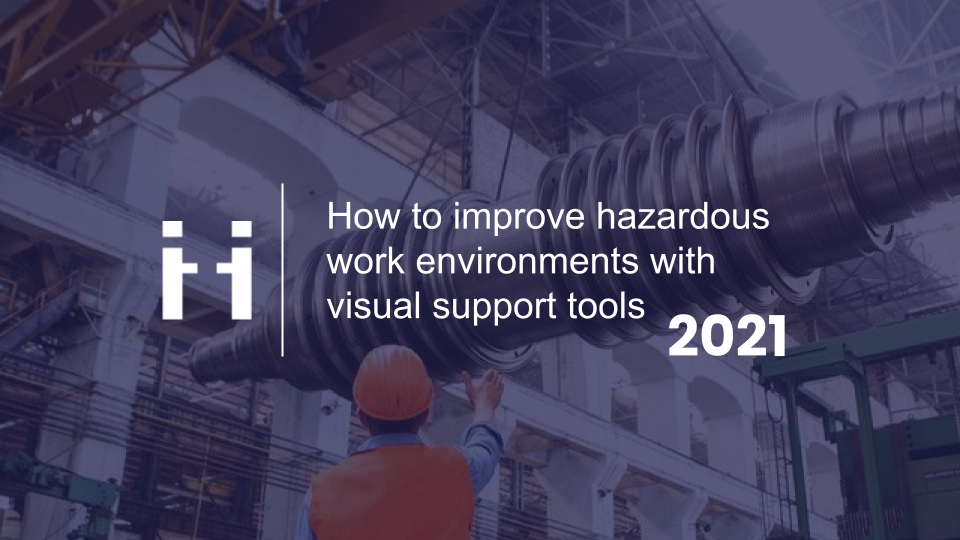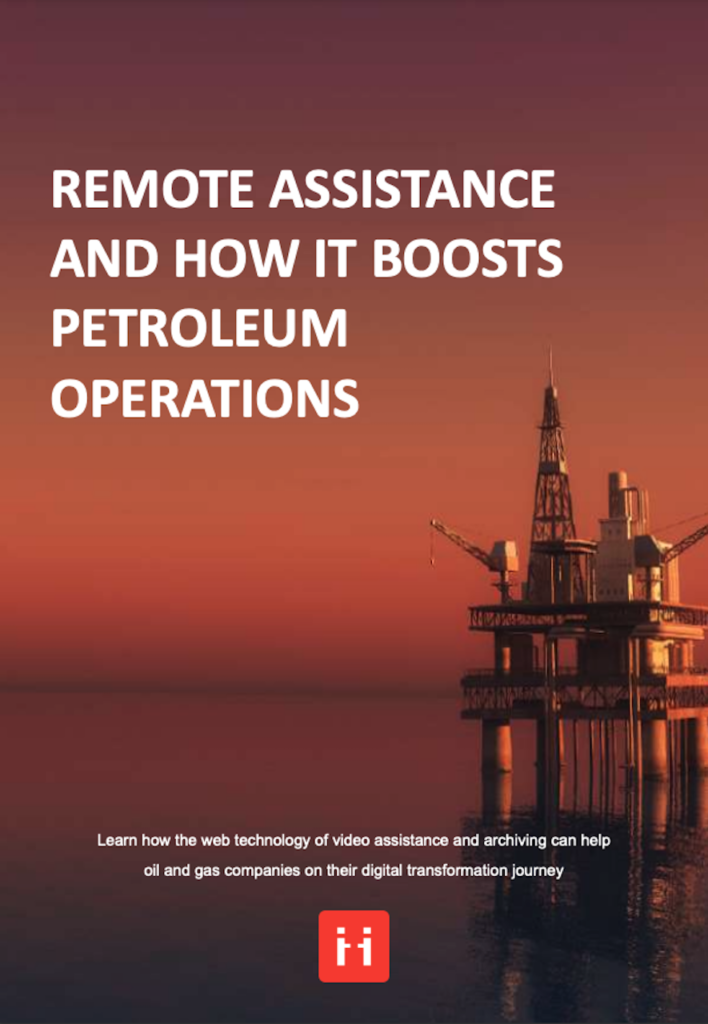
Share this article
Share this article
While not everyone is satisfied with their job, some of us have it easier than others. Workers in hazardous work environments risk injury and sometimes even death on a daily basis due to the nature of their job. But it doesn’t always have to be this way. Occupational Safety and Health Administration (OSHA) standards were created to help mitigate these risks as much as possible. Since their creation, they have led to a decline in workplace injuries in the United States. Still, they haven’t gotten the numbers down to zero. While the zero number may be impossible, promising new technologies like visual support tools are helping to turn hazardous working environments into just work environments.
By removing the need for most workers to be on-site, visual support tools like ViiBE allow hazardous workplaces to improve safety. For example, ViiBE has been employed on oil rigs to perform remote visual inspection and remote maintenance. This technology allows the inspector to connect remotely by video to perform the inspection, removing the need to dispatch an inspector on a helicopter. This remote connection reduces costs and reduces the number of personnel needed on site. Since travel time no longer has to be factored in, the inspector can conduct his job more frequently and urgently, increasing safety.
An often-cited name for unsafe working environments is the three D’s: dirty, dangerous, and demeaning.
These often include industrial applications like mines and factories. In the United States, many of these risks that historically plagued these environments have been mitigated thanks to Occupational Safety and Health Administration and other safety requirements. Internationally, the International Labor Organization (ILO) has workplace health and safety guidelines. Still, to be effective, these regulations and requirements need to be respected.
When occupational safety and health regulations are not respected, things can start to go wrong.
First of all, failing to report workplace hazards puts workers directly in harm’s way. Unreported hazards can cause injury or harm to employees. These threats need to be identified correctly in time to take proper steps to mitigate the danger.
Secondly, a lack of concern for safety can put you on the wrong side of the law. A concerned employee could file a complaint regarding unsafe working conditions, which will spark an inspection. If an inspector finds a failure to respect US workplace safety regulations, the company will have to pay penalties. In severe cases, the employer may even face jail time. An employee injured on the job is entitled to worker’s compensation to make up for lost wages.
Finally, failing to report hazards creates a workplace culture of disregard for safety in the long term. This lax environment increases the possibility of harm, which is the opposite of what you want!

A safe working environment allows employees to continue doing their job. Safety equipment is a fundamental way to protect workers from harm. Depending on the industry, potential hazards include physical hazards like electrical hazards or ergonomic hazards such as faulty equipment that can cause personal injury. Other workplace hazards include chemical hazards and biological hazards that pose health risks.
Employees need to be equipped with proper equipment like hard hats, safety goggles, and steel-toe boots to prevent harm. Additionally, they may need industry-specific safety equipment like biohazard suits. Unfortunately, when employees lack these basic protections, all too often, the result is harm. Standard safety equipment is used in many industrial applications because it is effective at preventing injury.
Visual assistance tools support on-site safety in several ways. First of all, fewer people are put in harm’s way when less personnel are required on site. Secondly, it increases access to experts at a moment’s notice. ViiBE’s expertise call routing feature makes it easy to access an expert or add them to an ongoing call. Because the expert doesn’t have to be sent to the site directly, this reduces costs. These savings allow for more investments in safety like more frequent inspections and more advanced equipment like augmented reality glasses. ViiBE integrates into RealWear’s AR headset. It also works on essentially any internet-connected device with a camera. This capability gives any worker the ability to call for help in an instant. Since ViiBE is download-free, all that is needed to connect to a call is a simple web link. Since ViiBE is so easy to use, it further lowers the barrier to entry for increased safety.
ViiBE’s knowledge management solution stores past call data in a central location. You also have the option to store the call videos in the knowledge base. This capability allows for more regular quality control and better training for employees who perform procedures incorrectly. When working in a hazardous environment, this can make all the difference. Furthermore, the knowledge base can store shared documents, photos, and relevant safety documents. Concretely, this means your team can have constant access to constantly updated safety and procedural information in a centralized location.
ViiBE has even more built-in capabilities to empower your team to get the job done safely. An expert can use a superimposed red dot to highlight important parts while giving instructions. This feature removes room for ambiguity, which is critical in hazardous situations. They can also annotate screenshots to save for future reference in the knowledge base. Finally, if a follow-up call is needed, ViiBE’s ticketing solution can store multiple calls under the same ticket. This unique approach to ticketing makes it simple to pick up from the previous call with all of the relevant information at hand.

Workplace safety is no laughing matter. For those working in hazardous environments, requirements like OSHA or the ILO guidelines help structure their work safely. Countless injuries and even death have been prevented by taking a preventative approach to safety. New technology like visual support tools are making it easier than ever to reduce workplace hazards. ViiBE’s video call software removes the need to send most personnel on-site and drastically lowers the cost and time implications of sending in an expert. With ViiBE, you can connect to an expert in an instant, from anywhere. This capability makes it easier to conduct safety inspections more regularly and as soon as a potential problem is detected. ViiBE’s unique feature set helps your team organize their work in a systematic safety-focused way. Consider giving ViiBE a try today.
Free E-book available now!